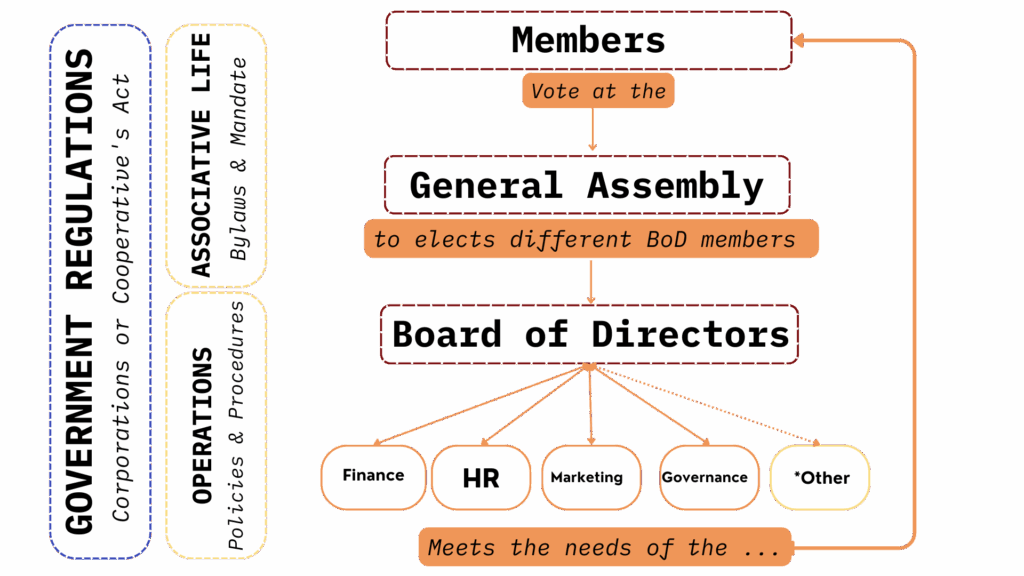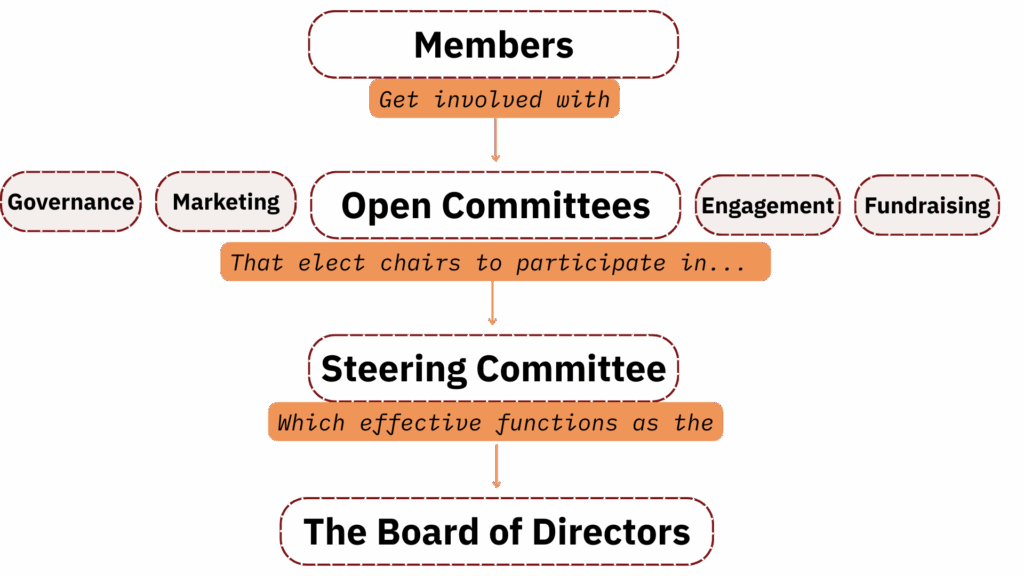Choosing an SSE Model
Different Organizational Models Comparison Sheet
Purpose of a Non-Profit Organization
- The purpose of a NPO is to pursue mission-oriented goals through the collective actions of citizens.
- Although there are many different kinds of NPO’s they all have one thing in common: The people involved in the NPO cannot use it to make personal financial gain.
- An incorporated NPO has a duty to operate according to rules set out in the Corporations Act. This includes keeping records, having annual member meetings, financial reporting to members and so on.
- Some NPO’s may decide they do not want/need to be incorporated due to the compliance costs. Your group will have to consider the advantages and disadvantages, look at its goals and decide what best suits its purpose.
Purpose of a Social Enterprise
- The purpose of a social enterprise is to contribute to social good through the sales of a good or service.
- Not explicitly a model that an organization can incorporate typically the incorporation status is as a non-profit corporation.
- 'Social enterprise' is an umbrella term for all economic activities conducted with a social purpose specifically involving the sale of goods and services.
- Typically operates on a cost-recovery basis and aspires for economic viability.
- NPO social enterprises should not be in direct competition with other taxable entities in the same business as it is considered an unfair advantage by the CRA.
Purpose of a Cooperative
- The purpose of a cooperative is for people with economic, social, or cultural needs to create an enterprise to meet those needs.
- Possible to be a non-profit everywhere in Canada except officially in Québec (but can be done through specifying surplus allocation in articles of incorporation).
- Co-op members must be able to use its services!The cooperative must have at least 50% of revenues generated coming directly from its membership, or in the case of worker cooperatives 50% of wages.
- Can carry out business in a normal commercial manner, should operate in cooperation with other cooperatives (not in direct competition).
Unsure what model is best for you?
- Take the test! Entrepreneur's Compass
- This 14 question test will help you in less than 10 minutes to reflect about your motivations, interests, ways and values.
Structuring your Organization:
Pre-Incorporation Inclusive Organizational Structures
- Regardless of your incorporation status, to fall under the umbrella of the solidarity economy, your organizational structure must allow for the democratic governance of the organization through its bylaws and structures (or equivalent founding documents in the case of non-incorporation).
- Membership-based democratic structures enable communities to hold organizations accountable to their mandate. This ensures in the long-term that collective resources are not usurped for private interests.
- For example, an organization in mission drift (i.e. not fulfilling its intended purpose) can be corrected through the membership electing a new board of directors.
- Otherwise, if the organization wants to change their mandate then they can also bring it to a general assembly for approval by the membership! This is because the mandate and bylaws are beholden to the government regulations in which you are intending to incorporate under.
- However, actively engaging your membership in your governance structures can prevent misappropriation of community assets!
- Building reciprocal engagement structures to enable your membership to participate in the steering and governance of your organization can proactively create accountability and transparency!
- Before you incorporate, you may want a more inclusive steering body overseeing the organization than what will eventually become your board of directors. Enabling members engaged in open committees to join your steering committee builds an inclusive pathway for collective governance!
- The Board of Directors may also have closed committees, such as HR, which only involve the members of the board for privacy and security reasons. Because ultimately the Board of directors has the fiduciary responsibility for the organization.
- These types of collective governance structures can be built into both cooperative and non-profit organizations, it all depends on how your bylaws are written!



